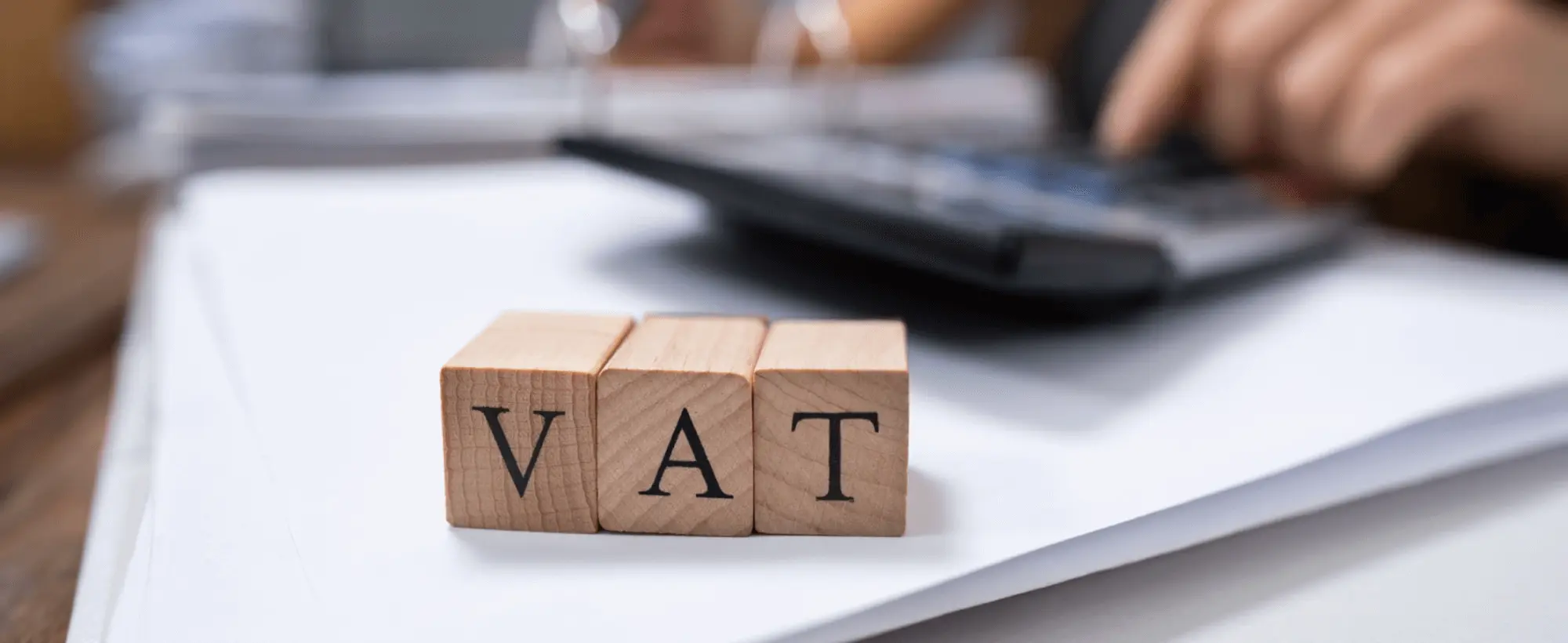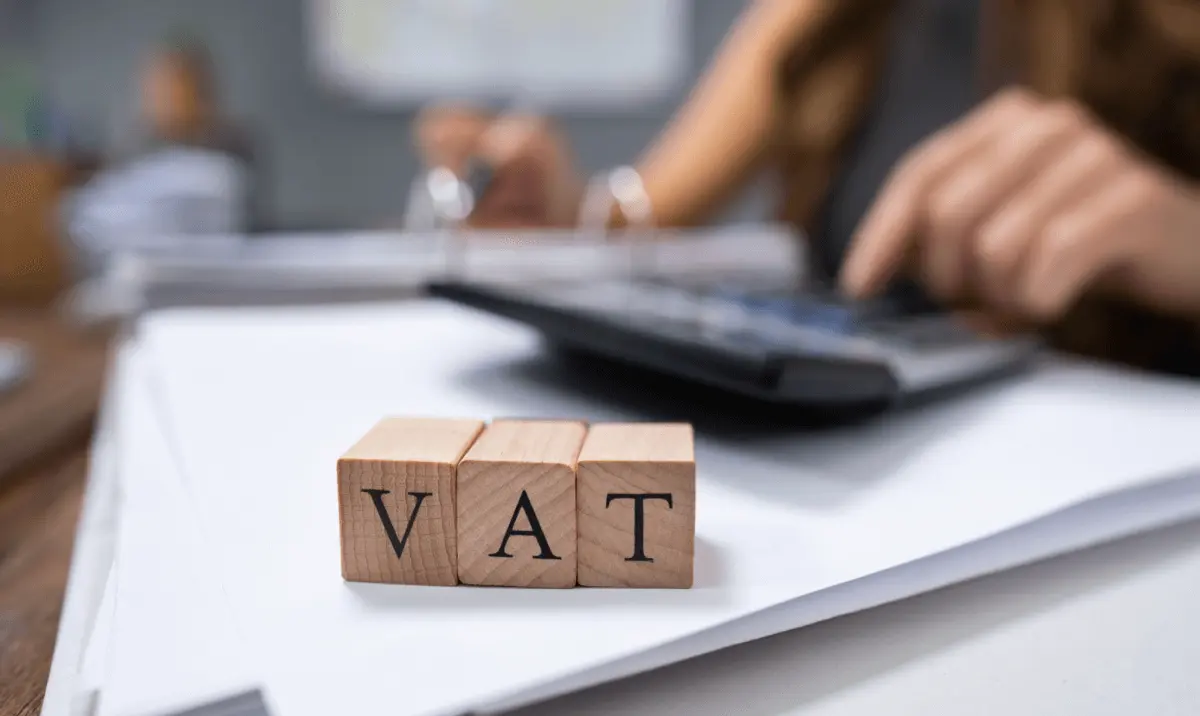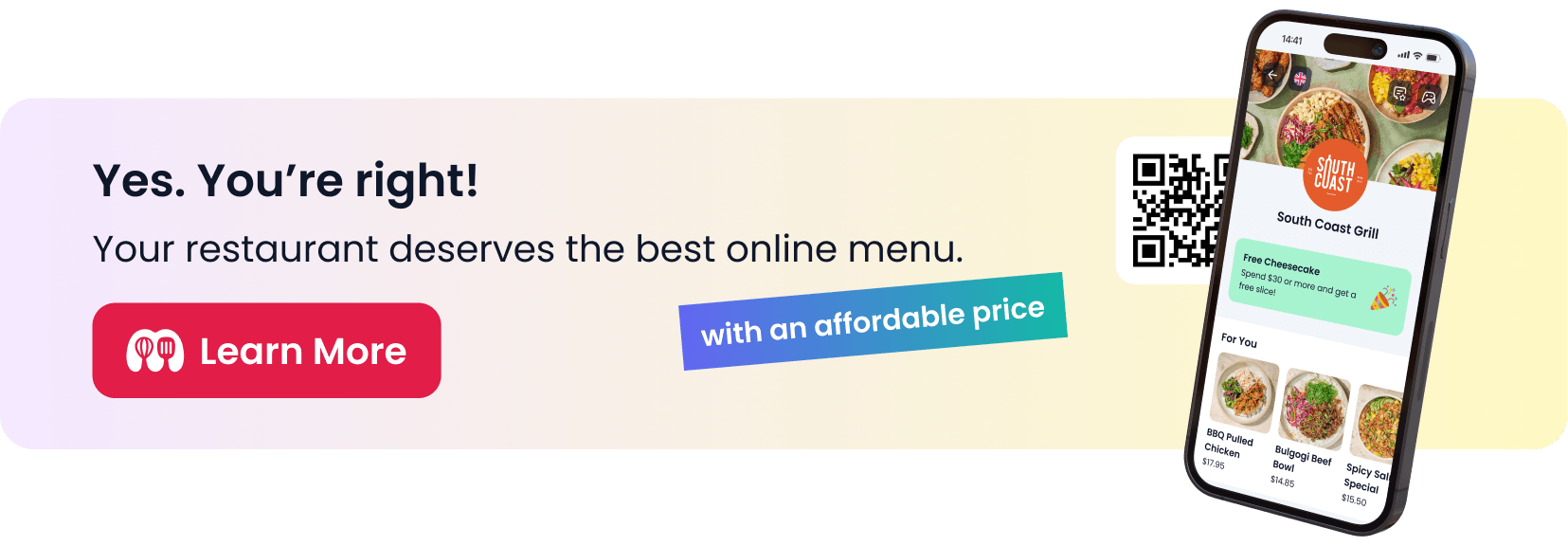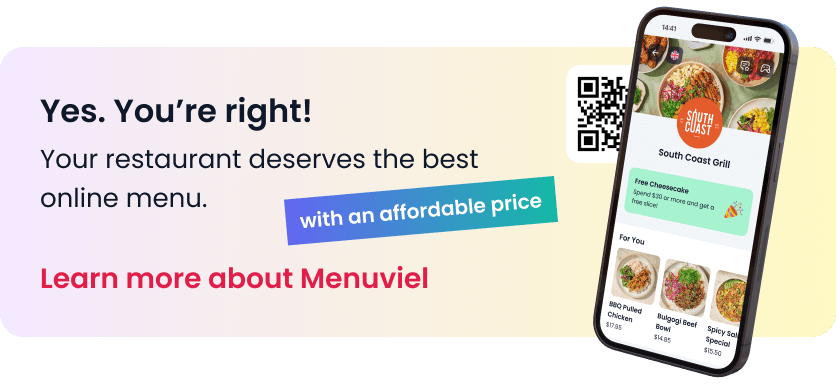

What are The Current VAT Rates for Restaurants in The UK?
Value Added Tax (VAT) is a critical component of doing business in the UK, especially for restaurant owners. Navigating VAT regulations can be complex, with various rates, exemptions, and compliance requirements. Understanding the current VAT rates for restaurants is essential to avoid costly mistakes and ensure smooth operations.
Whether you’re running a cozy café or managing a full-scale restaurant, understanding how VAT applies to your food, drinks, and services can impact everything from pricing to customer satisfaction. From registering for VAT to handling VAT on your receipts and bills, it’s vital for restaurant owners to stay informed about the ever-evolving VAT landscape in the UK.
This article will guide you through the different VAT rates that apply to restaurants, explaining how each rate affects your business. We’ll also explore how to register, charge, and claim VAT, while helping you avoid common pitfalls. This knowledge will not only ensure compliance but also help you manage costs effectively. Let’s dive into everything you need to know about VAT for restaurants in the UK.
Would you like to listen our deep-dive conversation about this article?
Understanding VAT for UK Restaurants
VAT is a consumption tax applied to goods and services in the UK. For restaurants, it’s important to understand how VAT works, as it directly impacts pricing, costs, and financial compliance. VAT is something that every restaurant owner should be well-acquainted with, whether they are just starting out or have been operating for years.
What is VAT and How Does It Work?
VAT, or Value Added Tax, is a tax that businesses charge on the sale of goods or services. For restaurants, VAT is typically added to food, beverages, and other services provided to customers.
Here’s how VAT works:
- Standard rate: Charged at 20% on most goods and services.
- Reduced rate: 5% VAT applies to some items such as certain hot takeaway food.
- Zero rate: Some items, such as cold takeaway sandwiches, may be zero-rated.
- Exemptions: Not all services are subject to VAT; some may be exempt, like certain educational or charitable activities.
Importance of VAT Compliance in Restaurants
For restaurant owners, VAT compliance is non-negotiable. Failing to register or file VAT returns correctly can lead to heavy penalties and legal repercussions.
Key reasons VAT compliance is essential:
- Legal Requirement: If your restaurant’s taxable turnover exceeds the VAT threshold (currently £85,000), you are legally obligated to register.
- Financial Impact: Inaccurate VAT reporting can lead to fines, interest charges, and even audits.
- Business Reputation: VAT compliance shows that your business is run professionally, which can positively affect how customers and authorities view your restaurant.
Staying on top of VAT obligations ensures that you avoid unnecessary penalties and maintain a solid financial standing.
Current VAT Rates for UK Restaurants
In the UK, restaurants are subject to different VAT rates depending on the type of food and services they provide. These rates can vary, making it crucial for restaurant owners to understand which rate applies to their offerings. Properly applying these rates will ensure that you stay compliant with tax laws and avoid costly mistakes.
Standard VAT Rate
The standard VAT rate in the UK is 20%, and it applies to most goods and services in the hospitality industry. Restaurants typically charge this rate on:
- Dine-in meals: All food and drinks consumed on the premises.
- Alcoholic beverages: Wine, beer, and spirits served in-house.
- Catering services: Private events, weddings, and corporate functions.
Charging the correct standard VAT rate ensures that your restaurant meets legal requirements and avoids penalties. Make sure this rate is clearly included in your pricing strategies to avoid undercharging customers.
Reduced VAT Rate (5%)
Some goods and services in restaurants qualify for a reduced VAT rate of 5%. This rate generally applies to:
- Hot takeaway food: Certain takeaway meals, such as hot food that is intended for consumption off-site.
- Children’s car seats and mobility aids: Not typically relevant for restaurants, but worth noting for any hospitality businesses offering additional services.
Understanding when to apply the reduced rate can benefit both your pricing strategy and your customers. Restaurants offering takeaway services should carefully categorize their offerings to take advantage of this reduced rate where applicable.
Zero VAT Rate
Some items and services fall under the zero VAT rate, meaning that VAT is not charged to customers, but you can still reclaim VAT on related business costs. Items that may be zero-rated include:
- Cold takeaway food: Items such as sandwiches, salads, or cold drinks sold to go.
- Unprocessed food: Ingredients purchased for cooking, like flour, eggs, and vegetables.
It’s important for restaurant owners to correctly identify zero-rated items and claim back any VAT paid on supplies or purchases related to those items. Proper categorization helps maintain VAT efficiency and improves your bottom line.
Exemptions from VAT in Restaurants
While most services provided by restaurants are subject to VAT, some activities may be exempt. VAT-exempt items include:
- Educational services: If a restaurant runs cooking classes or other educational activities that qualify for exemption.
- Charitable activities: If your restaurant engages in charitable work, some related services or items may be exempt from VAT.
While VAT-exempt activities are less common in restaurants, it’s important to know when they apply to ensure you don’t charge VAT incorrectly.
How to Register for VAT as a Restaurant Owner
VAT registration is a crucial step for any restaurant owner in the UK, especially if your taxable turnover exceeds the VAT threshold. Whether you’re legally required to register or choose to do so voluntarily, understanding the registration process is essential for staying compliant and avoiding penalties.
Who Needs to Register for VAT?
Not all restaurants are required to register for VAT immediately. However, once your business reaches a certain turnover, registration becomes mandatory.
- Mandatory registration threshold: If your restaurant’s taxable turnover exceeds £85,000 in a 12-month period, you must register for VAT.
- Voluntary registration: Even if your turnover is below the threshold, registering for VAT can still be beneficial, allowing you to reclaim VAT on purchases and supplies.
For growing restaurants, it’s important to monitor your turnover regularly. Registering in time prevents fines and keeps your business on the right side of HMRC regulations.
Steps to Register for VAT
Registering for VAT is a straightforward process that can be done online. Here’s a step-by-step guide to help you:
- Create a Government Gateway account: This account allows you to interact with HMRC and manage your tax obligations.
- Complete the VAT registration form: Provide details about your business, such as turnover, industry type, and the services you offer.
- Submit the required documents: You’ll need to provide evidence of your business’s financial activities, including bank statements and sales records.
- Receive your VAT registration number: Once approved, HMRC will send you a VAT registration certificate with your unique VAT number.
- Start charging VAT: You can begin charging VAT on applicable goods and services from the effective date of your registration.
After registration, you’ll need to maintain proper records and charge VAT appropriately on all relevant transactions.
What Happens After You Register?
Once you’re registered for VAT, there are several ongoing obligations that restaurant owners need to be aware of:
- VAT accounting: You’ll need to keep detailed records of all VAT you charge and pay on business expenses. This ensures you can accurately report VAT to HMRC.
- Filing VAT returns: You’re required to submit VAT returns, typically every quarter, where you report how much VAT you’ve charged and how much you can reclaim.
- Paying VAT: After filing your return, you’ll need to pay any VAT owed to HMRC by the due date.
Proper management of your VAT records ensures compliance and allows you to reclaim VAT on eligible purchases, improving your restaurant’s financial efficiency.
Charging VAT to Restaurant Customers
Once registered for VAT, restaurant owners must understand how to correctly charge VAT on their services and goods. Accurately calculating and displaying VAT on bills and receipts ensures compliance and avoids confusion for customers. Additionally, it helps maintain transparent pricing for your restaurant.
How to Calculate VAT on Restaurant Bills
When it comes to charging VAT, you must include the correct rate on all taxable goods and services. Calculating VAT can be straightforward with the right approach:
- VAT-inclusive pricing: This is where the price displayed on the menu already includes VAT. To calculate how much VAT is included in the total price, use this formula:
VAT = (Total price / 1+VAT rate) * VAT rate
Example: For a £100 meal with a VAT rate of 20%, VAT included is £16.67.
- VAT-exclusive pricing: If VAT is added on top of the menu price, you need to calculate the VAT separately and then add it to the total bill. Example: If a meal costs £100 and VAT is added at 20%, the total bill will be £120 (£100 + £20 VAT).
Whichever method you choose, ensure customers are aware of whether prices include VAT to avoid confusion.
How to Display VAT on Receipts
Displaying VAT clearly on customer receipts is a legal requirement. Customers should be able to see how much VAT they’re paying and what rates are being applied.
Here’s how VAT should appear on receipts:
- Itemized list: Include a breakdown of each item or service and the associated VAT rate. For example:
- Starter: £10 (VAT: £1.67)
- Main course: £20 (VAT: £3.33)
- VAT total: Show the total VAT amount for the entire bill separately from the item costs.
- VAT number: Your VAT registration number should be printed on the receipt.
Providing clear and detailed receipts builds trust with customers and ensures you comply with VAT regulations.
VAT Refunds and Claims for Restaurants
Managing VAT efficiently can significantly impact your restaurant’s financial health. As a restaurant owner, you can claim VAT back on certain business expenses and even handle VAT refunds for international customers. Understanding how to navigate VAT refunds and claims can help you reduce your overall tax liability and ensure you’re maximizing your VAT reclaim opportunities.
Claiming VAT on Business Expenses
One of the main benefits of VAT registration is the ability to claim back VAT on business-related expenses. This includes:
- Supplies and ingredients: VAT can be reclaimed on food, beverages, and supplies purchased for use in your restaurant.
- Equipment and furnishings: Items like kitchen appliances, tables, chairs, and other capital expenditures are VAT-deductible.
- Utilities and services: You can claim VAT on utilities such as electricity, water, and internet, provided these are used for your business.
To claim VAT back, ensure that:
- You have valid VAT invoices: Only invoices that clearly display the VAT amount can be used for reclaiming.
- You’re using the goods or services for business purposes: VAT on personal purchases or mixed-use items may not be fully reclaimable.
Having a robust system for managing your expenses and invoices will help ensure you’re claiming all the VAT you’re entitled to, which can significantly reduce your operating costs.
How to Manage VAT Refunds for International Customers
If your restaurant serves international tourists, you might be eligible to offer VAT refunds to customers who are leaving the UK. This is particularly relevant for high-end restaurants or establishments located in tourist-heavy areas.
Here’s how you can manage VAT refunds for international customers:
- Eligibility: Tourists from outside the UK can claim a refund on VAT for goods purchased in the UK if they are taking those goods out of the country.
- How to process refunds: You’ll need to provide customers with a VAT refund form (usually available from VAT refund agencies) which they present at the airport when leaving the UK.
- Ensure proper documentation: You must keep records of all VAT refund transactions, including the forms and receipts.
Providing VAT refunds can be an added selling point for international customers, particularly in high-traffic tourist locations. Ensure your staff is trained to handle these transactions efficiently.
VAT During Special Circumstances
VAT rules may change during certain special circumstances, such as temporary government measures or events that require different VAT handling. Being aware of these situations allows restaurant owners to adjust their pricing, operations, and accounting practices accordingly. Understanding how to manage VAT during such times can ensure compliance and potentially offer financial benefits.
Temporary VAT Rate Reductions
In times of economic uncertainty or crisis, the government may introduce temporary VAT rate reductions to support businesses. A recent example of this was the VAT reduction for hospitality businesses during the COVID-19 pandemic, where the government lowered the VAT rate on certain services to 5% to help businesses recover.
Key considerations during temporary VAT reductions:
- What services are affected? Typically, temporary reductions apply to food, non-alcoholic beverages, and accommodation services, allowing restaurants to pass savings on to customers.
- Duration of the reduction: These cuts are usually time-limited, so it’s important to stay updated on when they begin and end.
- Impact on pricing: Restaurant owners can choose to reduce prices in line with the VAT cut or maintain their prices and benefit from a higher profit margin during the period.
Adjusting your pricing and invoicing during such reductions can help maximize profits or provide competitive pricing for customers. Keeping up with government announcements is crucial to taking full advantage of these opportunities.
VAT for Special Events and Promotions
Running special events or promotions at your restaurant often involves different VAT considerations, especially when you offer discounts or bundle deals. Understanding how to handle VAT during these situations is important for accurate accounting and compliance.
Consider the following:
- Discounts and offers: VAT is charged on the discounted price of the meal or service. For example, if you offer a 10% discount on a meal priced at £50, VAT is applied to the reduced price (£45), not the original amount.
- Bundled services: If you offer a package deal that includes both VAT-applicable and VAT-exempt items (e.g., a meal with an educational experience), you need to calculate VAT for each element separately.
- Catering for private events: Hosting weddings, corporate events, or private parties may involve varying VAT rates depending on the services offered, such as alcohol or takeaway meals. Always ensure VAT is calculated based on the specific items in the package.
Planning for VAT implications during promotions or special events ensures that your pricing remains compliant and profitable, while offering value to your customers.
How to Avoid Common VAT Mistakes in Your Restaurant
Managing VAT for a restaurant can be complicated, and even small mistakes can lead to significant financial losses, penalties, or audits. By understanding common pitfalls and implementing best practices, restaurant owners can minimize the risk of VAT errors and ensure smooth operations.
Common VAT Errors and How to Avoid Them
Many restaurant owners unknowingly make errors in their VAT accounting, which can lead to costly penalties. Here are some of the most common mistakes and how to avoid them:
- Misapplying VAT rates: Restaurants often struggle with determining which VAT rate applies to various goods and services. To avoid this, ensure:
- Dine-in meals and alcohol are charged at the standard 20% rate.
- Takeaway meals that are hot are charged at 5%, while cold takeaway items may be zero-rated.
- Regularly review VAT rules for specific items or services that may fall under different categories.
- Failing to register on time: If your restaurant exceeds the VAT threshold (£85,000 turnover), failure to register promptly can result in penalties. To avoid this:
- Keep track of your monthly turnover.
- Set up automatic alerts to notify you when your business is nearing the VAT threshold.
- Incorrect VAT invoices: Not issuing correct VAT invoices is another common error. Ensure your invoices:
- Clearly show the VAT amount, VAT rate, and your VAT registration number.
- Include the correct breakdown of taxable items.
Being vigilant about VAT rates and invoicing practices can prevent these common errors and ensure your restaurant remains compliant.
How to Correct VAT Mistakes
Even with the best intentions, mistakes can happen. Fortunately, there are ways to rectify VAT errors if they occur. Here’s how to correct VAT mistakes efficiently:
- Identifying and adjusting undercharges or overcharges: If you discover that you’ve charged the wrong VAT amount, you can:
- Issue a corrected invoice or credit note to adjust the VAT charged.
- Adjust your VAT return accordingly to account for the error.
- Correcting past returns: If a VAT error was made in a previous return, you may need to correct it in a future return:
- For errors under £10,000, you can adjust them on your next VAT return.
- For errors over £10,000 or if multiple returns are affected, you will need to notify HMRC directly using a VAT652 form.
Taking prompt action to correct VAT errors minimizes penalties and helps maintain accurate records for your restaurant.
VAT Audits: What Restaurant Owners Should Know
A VAT audit can be a stressful experience for restaurant owners, but understanding how audits work and preparing in advance can make the process smoother. Being proactive with your VAT records, filing on time, and maintaining proper documentation will help you avoid penalties and ensure your restaurant’s financial compliance.
How to Prepare for a VAT Audit
The best way to handle a VAT audit is to be fully prepared. HMRC conducts audits to ensure that businesses are correctly charging and paying VAT. To be ready for an audit, restaurant owners should:
- Maintain accurate records: Keep detailed records of all VAT invoices, receipts, and returns for at least six years. This includes:
- VAT invoices issued to customers.
- Purchase receipts and VAT you’ve claimed back.
- Payroll records, as they relate to VAT on staff meals or expenses.
- Organize financial records: Ensure that all transactions are categorized correctly and that VAT is applied appropriately to both dine-in and takeaway items.
- Conduct internal checks: Periodically review your VAT returns and invoices to identify any potential errors before they are spotted in an audit.
Being organized and having all necessary documents ready will make the audit process much smoother, and it reduces the risk of fines or penalties.
What Happens During a VAT Audit?
Understanding the steps involved in a VAT audit can help you navigate the process with confidence. Here’s what typically happens:
- Initial notification: HMRC will inform you in advance that your restaurant is being audited. They will provide details on what records they will need to see and the timeframe for the audit.
- Inspection of records: During the audit, HMRC will review your VAT returns, invoices, receipts, and other financial documents to ensure that VAT has been correctly charged and paid. This might include checking:
- The VAT rates applied to different goods and services.
- VAT deductions on business expenses.
- How VAT is handled for promotional events, special offers, or international customers.
- On-site visit: In some cases, HMRC might conduct an on-site visit to inspect your premises, look at your business operations, and ensure that VAT is being handled correctly.
It’s essential to cooperate fully with the auditors, answer any questions promptly, and provide the requested documentation.
What to Do After a VAT Audit
Once the audit is completed, HMRC will provide feedback on their findings. Depending on the outcome, several actions may be necessary:
- No action needed: If everything is in order, no further action is required, and you’ll continue managing VAT as usual.
- Make corrections: If errors are found, HMRC will instruct you to make adjustments. This could involve correcting invoices, repaying VAT, or claiming back VAT on eligible items you might have missed.
- Penalties and fines: If significant errors or non-compliance issues are discovered, you may be subject to fines, interest, or other penalties. To avoid this, ensure you comply fully with any recommendations made by the auditors.
Preparing well for an audit, cooperating during the process, and addressing any post-audit recommendations will help you maintain smooth VAT operations and avoid unnecessary financial burdens.
VAT Penalties and How to Avoid Them
Failure to comply with VAT regulations can result in significant penalties for restaurant owners. These penalties can range from financial fines to more serious legal actions depending on the nature and severity of the non-compliance. However, by understanding the common pitfalls and implementing strong VAT practices, you can avoid these penalties and maintain a healthy financial standing for your restaurant.
Common VAT Penalties for Restaurants
HMRC imposes penalties when businesses fail to meet their VAT obligations. Understanding these penalties helps restaurant owners avoid costly mistakes:
- Late VAT registration: If your restaurant exceeds the VAT threshold (£85,000) but you fail to register on time, you could be fined. The penalty is based on how late you registered and can range from 5% to 15% of the VAT due.
- Late VAT returns and payments: Failing to submit VAT returns or make VAT payments on time can result in surcharges. The surcharge rate increases with each late submission, potentially reaching up to 15% of the VAT due.
- Inaccurate VAT returns: If you submit incorrect VAT returns, HMRC can issue penalties based on the nature of the error:
- Careless errors: Fines can range from 0% to 30% of the VAT owed.
- Deliberate errors: Fines for intentional errors can range from 20% to 100% of the VAT due.
Understanding these penalties is the first step in protecting your business from unnecessary costs and ensuring you meet your legal VAT obligations.
How to Minimize the Risk of VAT Penalties
To avoid VAT penalties, restaurant owners need to implement strong VAT management practices. Here are the key strategies to minimize the risk:
- Track your turnover: Regularly monitor your business’s turnover to ensure you register for VAT on time. Implement software or alerts that notify you when you are nearing the VAT registration threshold.
- File VAT returns on time: Set reminders or use accounting software to file VAT returns before the deadline. Submitting returns on time helps avoid surcharges and interest charges.
- Keep accurate records: Maintain detailed records of sales, purchases, VAT invoices, and expenses. Ensure these records are organized and easily accessible in case of an audit or any VAT inquiries.
- Double-check VAT calculations: Mistakes in VAT calculations are common. Use reliable accounting software to help calculate the correct VAT on sales and expenses, and review these calculations before submitting returns.
- Get professional help: If VAT regulations are overwhelming, consider hiring a VAT accountant or consultant to handle your VAT obligations. Professional help can save time and reduce the risk of mistakes.
By adopting these best practices, you can avoid common VAT penalties and ensure that your restaurant remains compliant with HMRC regulations.
Using Accounting Software to Manage VAT Returns
Investing in accounting software is one of the most effective ways to manage your VAT obligations and avoid penalties. With the right software, you can automate many VAT-related tasks and reduce the risk of human error.
Benefits of using accounting software for VAT management:
- Automated VAT calculations: Most accounting software will automatically apply the correct VAT rates to your sales and purchases, reducing the chance of errors.
- Real-time tracking: You can monitor your turnover and VAT liability in real-time, allowing you to stay on top of VAT deadlines and thresholds.
- Easy VAT return submission: Many software platforms are compatible with HMRC’s Making Tax Digital (MTD) system, allowing you to submit VAT returns directly from the software.
Incorporating reliable accounting software into your restaurant’s operations ensures accuracy and efficiency in VAT management, helping you avoid penalties and stay compliant.
Key Takeaways
- VAT is mandatory for restaurants with a taxable turnover over £85,000: Restaurant owners must register for VAT once they hit this threshold to avoid penalties and ensure compliance with HMRC regulations.
- Different VAT rates apply to various services: Restaurants must charge 20% VAT on dine-in meals and alcoholic drinks, while certain takeaway items may qualify for reduced or zero VAT rates.
- Proper VAT management is crucial: Correctly calculating and displaying VAT on bills and receipts is essential to avoid confusion and penalties. Use reliable accounting software to simplify VAT calculations.
- VAT claims can reduce your tax liability: Restaurant owners can reclaim VAT on business expenses such as supplies, equipment, and utilities. Keeping detailed records of all invoices is key to maximizing your VAT claims.
- Audits and penalties are avoidable: Regularly reviewing your VAT practices and preparing for potential audits can prevent costly fines. Filing accurate VAT returns on time ensures compliance and helps you avoid unnecessary penalties.
By staying informed about the current VAT rates and understanding how to manage VAT effectively, restaurant owners can maintain financial health and ensure smooth, compliant operations.
ABOUT THE AUTHOR
Erkin Coban
Your Customers Deserve The Best
And we got Menuviel for them.
The fastest and easy-to-use online QR menu with 12+ unique features. Choose Menuviel and elevate your service quality to the next level.
Use free for the first 30 days.

In This Article

Free AI Tools for Restaurants
TRY NOW ➜

Lightning-fast loading pages and images
Your menu loads instantly with optimized images—no waiting, just a smooth browsing experience.







